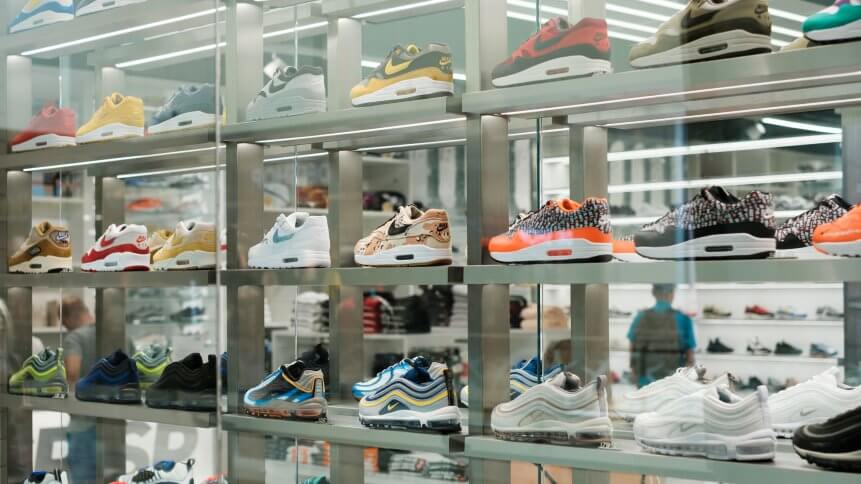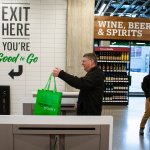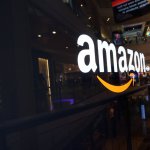Retail in 2030 — a glimpse into the future

David Dobson, Director of Retail, Hospitality and Consumer Goods at Intel, recently said that retail is headed toward its “second wave” of digital disruption.
“The first wave of disruption was about how to compete with online,” he commented at NRF 2020 in New York during January. “The next wave is really about the integrated solution. It’s not online versus in-store but rather how to deliver value to the customers wherever they want to be. It’s clear that you have to have both, and you have to merge those experiences.”
This is key when looking at 2030. Because, as things stand, many retailers remain bogged down by ‘online vs. bricks and mortar’ mindsets. No wonder that after 25 years of e-commerce, the physical side of things is still approximately 80 percent of all retail. Customer experiences are broken on both sides of the journey.
By 2030, however, much progress will have been made. Stores will no longer be primarily designed to sell products. The high street of the future will be a blend of mixed-use. Shoppers value experiences as much as shopping, hence the rise of showrooming and the likes of Instagrammable stores.
Staples Connect
A good example of this is Staples recently taking the wraps off Staples Connect, a store with co-working, podcasting and community event spaces for professionals, teachers, and students.
This has been rolled out Stateside in six Boston area stores while some elements of Staples Connect can be found in outlets throughout Massachusetts.
The merchandise layout is designed around solutions for home offices, small businesses, and classrooms. Also on offer are tech services, print, and marketing services, TSA pre-check enrolment and professional services, including marketing, legal and tax and finance, offered by selected partners.
“We recognize that the way people shop is changing, and with the launch of Staples Connect we are adapting to fit the needs of our customers,” said Mike Motz, CEO at Staples US Retail.
“Our customers are teachers, students of all ages, small business owners and side hustlers. Research shows that much of what they are seeking is real human interaction with members of their community and industry, which is key to productivity and growth.”
Hyper-personalized experiences
In the UK, meanwhile, Sainsbury’s has unveiled its new On the Go city convenience store format.
The retailer’s 2,200 sq ft Mansion House store in London’s Square Mile is the first to go live. Nine more will open across Edinburgh, Bristol, Glasgow, and London over the coming months. Sainsbury’s says that it has over 130 Local stores in busy urban areas that could be converted into On the Go format.
Customers can choose to eat-in – for the first time perch tables have been placed at the front of the store. Products from counters have also been brought to a ‘grab and go’ station. Changed three times a day, it will offer customers a range of food to go for breakfast, lunch and afternoon tea.
YOU MIGHT LIKE

Amazon Go launches first cashierless grocery store
It is also possible to shop till-free using the SmartShop mobile app and rapid exit checkouts are available if people choose to use the traditional way of doing things. Argos and Tu clothing Click and Collect are also on offer.
Elliott Jacobs, EMEA Commerce Consulting Director at LiveArea, sees this as a step towards hyper-personalized shopping experiences.
“Today’s consumers demand their individual expectations are met. The big four UK supermarkets, however, have traditionally taken a one-size-fits-all approach to experience. The Sainsbury’s concept store shows an understanding that this isn’t optimal, and that they need to design, update and tailor stores based on all the data pull,” he commented.
Flipping the script
Retailers must urgently reassess their priorities and the ways that they connect with their customers, argued Paul Kirkland, Director of Retail & Hospitality at Fujitsu UK.
One way that they can do that is by turning their stores inside-out; flipping the regular decision-making process on its head and giving those who interact with customers daily, the store colleagues, more say in the store layout and choice of stock. Technology is an enabler for this, helping to free up store staff’s time to truly interact with their customers.
Retail won’t be perfect in 2030. Traditional retailers will still be trying to cost-cut their way to prosperity and struggling with legacy technologies. And online shopping journeys won’t be completely friction-free. Nonetheless, the aforementioned next wave of disruption will be well and truly in motion.








